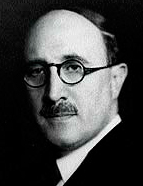

Upon his return to Spain in 1928, after visiting several European countries, CSA began leading a seminar on the history of Spanish medieval institutions, attended by many of his students. In 1932, this seminar led to the founding of the Instituto de Estudios Medievales [Institute of Medieval Studies]. The institute's primary mission was to publish the Monumenta Hispaniae Historica , a documentary collection similar to those already available in Germany, France, and Portugal at the time. These sources would be the pillars for the construction of a historical-legal discourse parallel to and in line with the discourse that the specialists in the history of literature had constructed at the Centro de Estudios Históricos : a history of Spain with "the people" as the protagonists and Castile as the centre of gravity. The emphasis on the people's role in constructing national identity both legitimised and eternalised that identity, while the focus on Castile underscored these researchers' opposition to the notion of an "invertebrate" Spain. Thus, a new historiography was emerging — liberal and conservative in political perspective, highly attentive to municipal history and the study of cities —, where "the people" had lived. This approach aligned with the historiographical discourses of other European countries and moved away from the Romantic narrative, which had portrayed a national history heavily marked by religious elements.
In CSA's studies, attention to institutions extended beyond just legal matters. In his work, topics such as trade, land ownership, and medieval lordships were examined through the lens of "social institutions". The focus was always on the institution itself — for instance, in the case of Castilian behetrías or the encomendación – and its formal characteristics defined its nature. Through an empirical analysis based on contemporary documents, he assessed the evolution of social forms as a result of the passage of time and adaptation to changing circumstances, and emphasised the enduring aspects, focusing on the structures that were maintained over the centuries. Institutions such as the behetrías — communities that could choose their own lord — and court meetings originated in high-medieval societies, and then evolved over time while preserving their core formal characteristics. This theory has had a significant impact on later research and, although it has been somewhat nuanced, has also been supported by more recent studies. In fact, several of these ideas provided the foundation for some of the political measures that defined the Second Republic, including the land reform bill.
This work is financed by national funds through FCT - Foundation for Science and Technology, I.P, in the scope of the projects UIDB/04311/2020 and UIDP/04311/2020.
